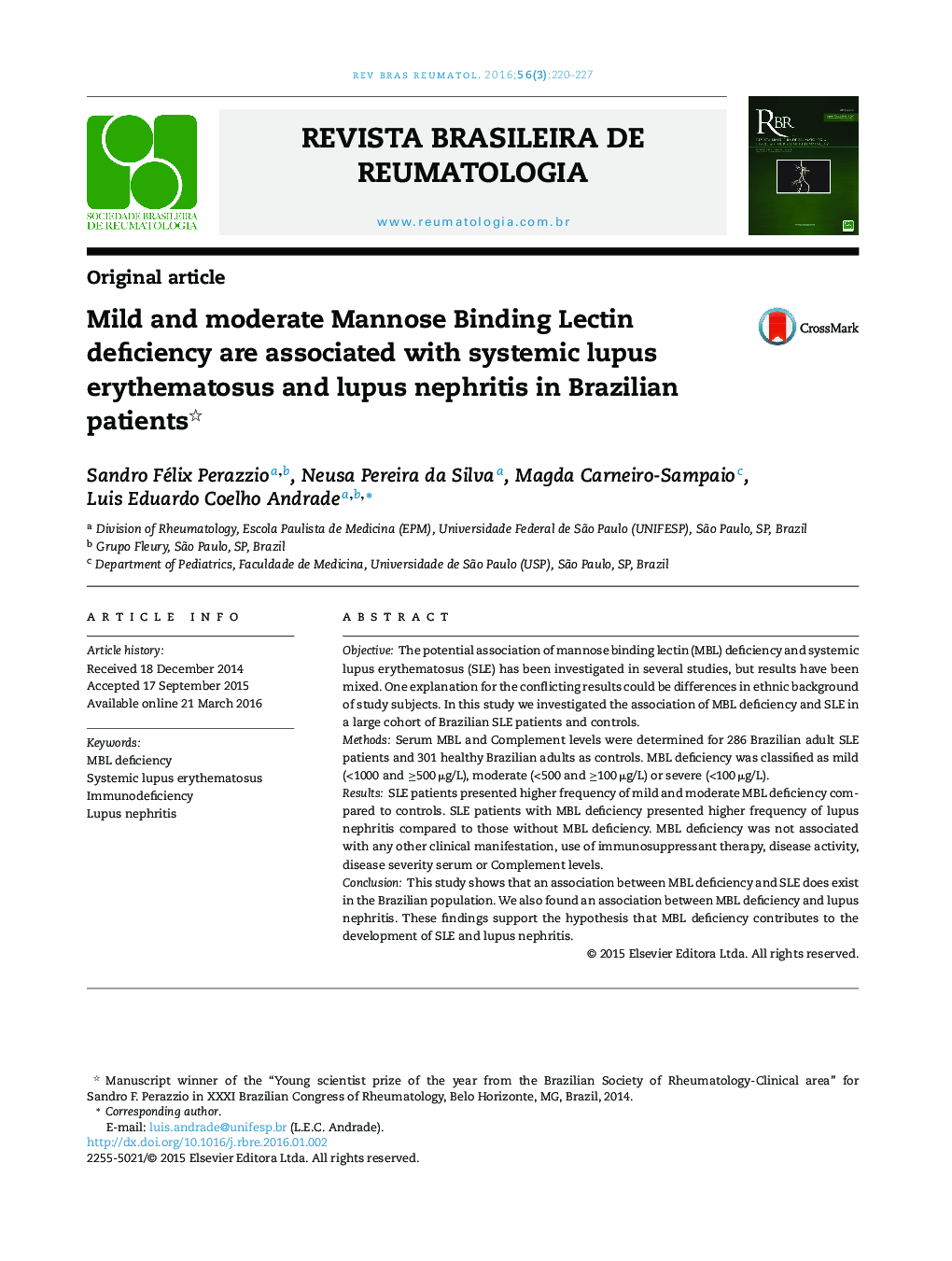| کد مقاله | کد نشریه | سال انتشار | مقاله انگلیسی | نسخه تمام متن |
|---|---|---|---|---|
| 3384996 | 1220566 | 2016 | 8 صفحه PDF | دانلود رایگان |
ObjectiveThe potential association of mannose binding lectin (MBL) deficiency and systemic lupus erythematosus (SLE) has been investigated in several studies, but results have been mixed. One explanation for the conflicting results could be differences in ethnic background of study subjects. In this study we investigated the association of MBL deficiency and SLE in a large cohort of Brazilian SLE patients and controls.MethodsSerum MBL and Complement levels were determined for 286 Brazilian adult SLE patients and 301 healthy Brazilian adults as controls. MBL deficiency was classified as mild (<1000 and ≥500 μg/L), moderate (<500 and ≥100 μg/L) or severe (<100 μg/L).ResultsSLE patients presented higher frequency of mild and moderate MBL deficiency compared to controls. SLE patients with MBL deficiency presented higher frequency of lupus nephritis compared to those without MBL deficiency. MBL deficiency was not associated with any other clinical manifestation, use of immunosuppressant therapy, disease activity, disease severity serum or Complement levels.ConclusionThis study shows that an association between MBL deficiency and SLE does exist in the Brazilian population. We also found an association between MBL deficiency and lupus nephritis. These findings support the hypothesis that MBL deficiency contributes to the development of SLE and lupus nephritis.
ResumoObjetivoVários estudos já investigaram a potencial associação entre a deficiência de lectina de ligação a manose (LLM) e o lúpus eritematoso sistêmico (LES), mas os resultados obtidos são mistos. Uma explicação para esses resultados conflitantes poderia estar nas diferenças étnicas dos indivíduos estudados. Este estudo investigou a associação entre a deficiência de LLM e o LES em uma grande coorte de pacientes brasileiros com LES e controles.MétodosDeterminaram-se os níveis séricos de LLM e complemento em 286 pacientes adultos brasileiros com LES e 301 adultos brasileiros saudáveis que atuaram como controles. A deficiência de LLM foi classificada como leve (<1000 e ≥ 500 μg/L), moderada (<500 e ≥ 100 μg/L) ou grave (<100 μg/L).ResultadosOs pacientes com LES apresentaram uma maior frequência de deficiência leve e moderada de LLM em relação aos controles. Os pacientes com LES com deficiência de LLM apresentaram uma maior frequência de nefrite lúpica em comparação com aqueles sem deficiência de LLM. A deficiência de LLM não esteve associada a qualquer outra manifestação clínica, uso de terapia imunossupressora, atividade da doença, gravidade da doença ou níveis séricos de complemento.ConclusãoEste estudo mostra que há uma associação entre a deficiência de LLM e o LES na população brasileira. Encontrou-se também uma associação entre a deficiência de LLM e a nefrite lúpica. Esses resultados apoiam a hipótese de que a deficiência de LLM contribui para o desenvolvimento do LES e da nefrite lúpica.
Journal: Revista Brasileira de Reumatologia (English Edition) - Volume 56, Issue 3, May–June 2016, Pages 220–227
